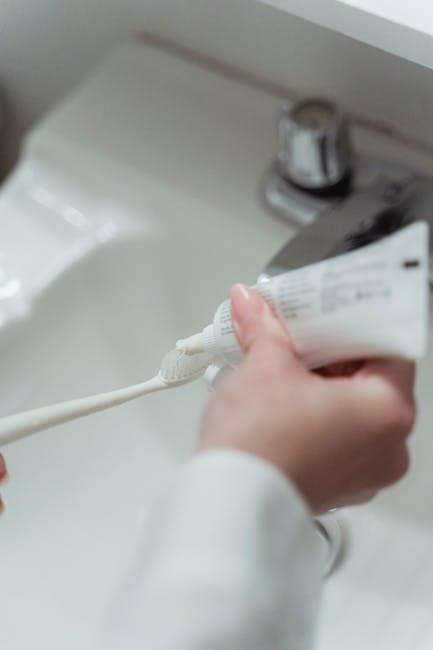Fluoride Ban Could Create Cavities For 1 Of Every 3 U.S. Kids – U.S. News & World Report
Fluoride has been a cornerstone of dental health in the United States for decades, significantly reducing cavities among children and adults alike. However, recent debates and movements toward banning fluoride in community water supplies could put millions of children at risk. According to a report from U.S. News & World Report, a fluoride ban could create cavities for one in every three U.S. kids. This article delves into the importance of fluoride, the potential consequences of a ban, and practical tips to protect children’s dental health.
Understanding the Role of Fluoride in Dental Health
Fluoride is a naturally occurring mineral found in water, soil, and various foods. It helps prevent tooth decay by:
- Strengthening tooth enamel against acid attacks from plaque bacteria.
- Reversing early stages of tooth decay.
- Inhibiting the growth of harmful oral bacteria.
Community water fluoridation began in the mid-20th century and quickly became one of the most effective public health measures. The Centers for Disease Control and Prevention (CDC) states that fluoridated water reduces cavities by approximately 25% in children and adults.
What Does the Fluoride Ban Mean for U.S. Children?
The proposed fluoride ban involves removing added fluoride from municipal water supplies. While the goal may be to address concerns about potential overexposure or health risks, research shows that eliminating fluoride could have unintended consequences, especially for children.
Key Concerns Highlighted by Experts:
- Increased Cavity Risk: Without fluoride, tooth decay rates could spike dramatically. The U.S. News & World Report highlights that one out of every three children may develop new cavities.
- Oral Health Inequities: Fluoride benefits low-income families and communities with limited access to dental care especially. A ban could widen dental health disparities.
- Costly Treatment Burden: Cavities often require fillings, crowns, or extractions. Increased tooth decay can lead to higher medical expenses and lost school days.
The Benefits of Fluoride: Why It Matters
| Fluoride Benefit | Impact on Children |
|---|---|
| Strengthens Enamel | Helps prevent tooth decay from early childhood |
| Remineralizes Teeth | Repairs damage before cavities form |
| Reduces Dental Costs | Fewer dental visits and invasive procedures |
| Prevents Gum Disease | Maintains healthy gums, important for kids’ overall health |
Practical Tips for Protecting Your Child’s Dental Health
Whether or not communities decide to maintain fluoride in water supplies, parents can take proactive steps to safeguard their children’s teeth:
- Regular Brushing and Flossing: Encourage brushing twice a day with fluoride toothpaste and daily flossing.
- Dental Checkups: Schedule routine visits to pediatric dentists for professional guidance and early cavity detection.
- Balanced Diet: Limit sugary and acidic foods and drinks, and encourage nutrient-rich meals.
- Use Fluoride Supplements: Consult with a dentist to see if fluoride varnishes or supplements are suitable.
- Promote Drinking Tap Water: When safe and fluoridated, drinking tap water helps maintain fluoride exposure without extra cost.
Case Study: Communities Without Fluoridated Water
Research in areas where fluoride was removed or absent from water supplies shows a clear increase in dental decay. For example, a 2019 study in a midwestern U.S. city found:
| Metric | Before Fluoride Removal | 2 Years After Fluoride Removed |
|---|---|---|
| Children with Cavities (%) | 22% | 35% |
| Average Number of Cavities per Child | 1.2 | 2.0 |
| Dental Emergency Visits | 150 annually | 275 annually |
This case study highlights the real-world impact a fluoride ban could have on children’s oral health.
Firsthand Experience: A Parent’s Perspective
Jessica, a mother of two from a city that recently debated fluoride removal, shares her concerns:
“Since the discussion about banning fluoride started, I’ve been worried about my kids’ teeth. We don’t have easy access to dental care, and fluoride in the water has been our first defense. I’ve increased brushing and diet monitoring, but without fluoride, I fear cavities will become more common — and expensive to fix.”
Conclusion: Why Protecting Fluoride Access Is Vital
The potential fluoride ban poses a significant risk to children’s dental health in the U.S., threatening to increase the cavity rate to an alarming one-third of the pediatric population. Community water fluoridation remains one of the most cost-effective, safe, and equitable ways to prevent tooth decay nationwide.
As parents, caregivers, and community members, understanding the benefits of fluoride and advocating for its continued use in public health systems is crucial. Combined with effective oral hygiene and dietary habits, fluoride helps ensure healthy smiles and reduces dental care disparities for generations of children to come.
Stay informed, brush diligently, and prioritize your child’s dental health — because preventing a cavity today can lead to a lifetime of bright smiles.


